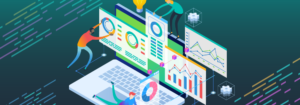There has been extensive conversation around Meaningful Use (MU) and the passage of Medicare Access and CHIP Reauthorization Act (MACRA). CMS announced earlier in the year a shift from MU to MACRA which streamlines the transition from fee-for-service to value. MACRA highlights three changes in how to pay those who treat Medicare beneficiaries, including:
- Ending the Sustainable Growth Rate (SGR) formula for determining Medicare payments for healthcare provider services
- Making a new framework for rewarding health care providers for giving better care not just more care
- Combining existing quality reporting programs into one new system
As the healthcare industry begins to move towards MACRA– how can providers and payers prepare? CMS outlines the Merit-Based Incentive Payment System (MIPS) as one of the quality programs that enable providers to map back to MACRA.
MIPS is a great program that helps providers evaluate performance from a variety of perspectives as it relates to quality and measure how they are offering care in a meaningful way. With a timeline put in place, how can healthcare organizations lay the groundwork to build towards it? Here are three areas to keep in mind:
- Technical Readiness – Do you have the appropriate analytics platform and metrics put in place? Analytics is the first step towards implementing MIPS. This aligns the organization by establishing benchmarks and goals, along with using data to properly track efforts.
- Collaboration between clinical and business departments – Are both clinicians and the c-suite aligned on results? This conversation is an important one to have. Clinicians and c-suite executives, although envisioning the same goal, have different methods in achieving them. Connecting and establishing a roadmap is crucial to keeping everyone honest and on-track.
- Close-eye on data – Data is key and with an effective analytics program it can shine a light on gaps in care. Data allows organizations to pivot strategies so that roadblocks are less costly and time consuming.
To learn more about how to effectively track towards MIPS – check out our performance management solution.
Get our take on industry trends
Gamification in healthcare only works if you can measure it – here’s how
In business and in sports, it’s all about teams. What teams can accomplish when they work together. How they can fail spectacularly when they do
Read on...Pandemic fuels 2021 healthcare megatrends
When I wrote about megatrends last year, the predictions were, naturally, forward-looking. Telehealth, for example, was important because of increased healthcare consumerism and the convergence of technologies to make its use quick and easy for payers, providers and patients.
Read on...Measuring provider cost and utilization
No matter the time of year, payers and providers should work to agree on a shared source of truth when it comes to data. With the recent end of the year, it’s time to celebrate the new year (who isn’t ready to say goodbye to 2020?) and close the books, which includes the reconciliation of any shared savings or losses.
Read on...Data visualization: A picture is worth a thousand…healthcare data points?
The amount of data produced daily has grown exponentially with nearly 90% of the world’s data generated in the last two years alone. To ensure we can make sense of this data, analysts must find meaningful ways to present the information to their audiences.
Read on...


